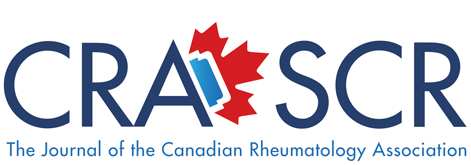Fall 2019 (Volume 29, Number 3)
Apropos of Appropriateness
By Philip A. Baer, MDCM, FRCPC, FACR
“A good surgeon doesn't just concentrate on technical ability, but also on the appropriateness of what you're doing.”
– Benjamin Carson
Download PDF
Checking into my EMR from home one evening, I spy a new referral in the electronic fax inbox. “Please see this patient with a +ANA, joint pain and a rash.” Well that could be systemic lupus erythematosus (SLE) in a young woman, but the patient this time is a 68-year-old man with a long history of eczema, hand and knee X-rays showing typical osteoarthritis, and an ANA of 1/160 homogeneous, with negative RF, C3, C4, CH50 and anti-dsDNA having been done as well. Not an uncommon situation, and fertile ground for an e-Consult where those exist, perhaps accompanied by sending back the Centre for Effective Practice OA tool (www.cfpc.ca/uploadedFiles/CPD/OATOOL_FINAL_Sept14_ENG.pdf) and other suggestions for management.
Talking shop with other rheumatologists over dinner or at conferences, we are all receiving these types of referrals. While Choosing Wisely Canada has widely promoted the inappropriateness of many serologic tests in rheumatology, we don’t seem to be having much impact on the ground. Why? There is extensive literature on the poor sensitivity and specificity of RF and ANA tests.1,2 Overtesting and overdiagnosis were highlighted in a plenary session at EULAR 2019, with ANA testing prominently featured (poster OP0020). I note that medical labs are marketing certain tests to patients for which they must pay out of pocket, including the JOINTSTAT test for rheumatoid arthritis (RA), but no one is pitching RF and ANA testing to patients or physicians. No academic rheumatologist I have ever met says that their lectures to medical students or family medicine residents advocate for RF or ANA tests in all patients with joint pain, or as a necessary prerequisite to a rheumatology referral. No clinical practice guidelines suggest this behaviour. While some hospitals may allow the ordering of a “rheumatology lab panel,” the tests must be ordered individually in outpatient practice. In Ontario, the standard lab requisition does not list any of these tests on the preprinted form. They have to be ordered individually, and manually added to the form. Despite this proven behavioural economics technique designed to reduce test ordering, the flood of RF, ANA, HLA-B27, anti-CCP, anti-ENA and complement component ordering persists, as illustrated in Canadian studies.3,4
What can be done to reduce the “stickiness” of this undesirable learned behaviour? Is the cohort of primary care physicians who started practice before Choosing Wisely a lost cause? One hopes not. At the individual level, I have delivered a talk on Rheumatology Lab Testing many times to large audiences at various primary care conferences. It is a popular session, but am I changing behaviour? Hard to know. At one lecture covering a specific health region near Toronto, I was able to find a listing of all the rheumatologists in the area and their requirements for referral requests. Reassuringly, none demanded any of the abused tests as a prerequisite for seeing a patient (www.mississaugahaltonhealthline.ca/listServices.aspx?id=10981). The CART referral form on the rheuminfo.com website also focuses primarily on elements of the history and examination (rheuminfo.com/docs/physician-tools/Canadian-Arthritis-Referral-Tool-CART.pdf). RF, ANA, ESR and CRP are mentioned, but not mandated.
If the carrot does not work, maybe the stick will. After six years without a contract and with progressive fee cuts, Ontario physicians including rheumatologists now have an arbitrated settlement with the Ontario Ministry of Health as of early 2019. As part of the deal, an Appropriateness Working Group has been established to find savings of $460 million over the next few years by tightening fee code definitions or delisting certain services. Dr. Julie Kovacs and I have submitted proposals in the rheumatology sphere, and dealing with inappropriate lab testing is a prominent component. The costs incurred are not just the few dollars for each test, but the downstream consequences related to patient anxiety over positive tests, and the generation of inappropriate referrals which are expensive, and also impede access to rheumatology consultations for patients who most need us. No decisions have been made to date, but we remain hopeful.
As they say, every dog has his day. Despite my feelings about inappropriate ANA testing, I was interested to find a poster at EULAR 2019 showing that a negative ANA test, which I might never have ordered myself in a patient with RA, could be useful. The study showed that RA patients who had a negative baseline ANA never developed anti-drug antibodies when treated with infliximab or adalimumab (poster SAT0155). As I have no access to anti-drug antibody testing, the negative ANA test ordered by someone else before referring me an RA patient might actually be helpful in deciding what to do if that patient experiences a secondary failure of one of these two anti-TNF therapies.
Meanwhile, checking back in at the office, there is a new referral: “A 53-year-old man with numerous work injuries and chronic pain has a slightly high ESR of 28, a weakly + RF of 15 IU, and an ANA + at 1/40 homogeneous pattern. Please assess for rheumatologic causes of pain.” I am accustomed to this, but I hope rheumatologists of the future will be spared this type of consult request, if our educational efforts are successful.
References:
1. Abeles AM, Abeles M. The clinical utility of a positive antinuclear antibody
test result. Am J Med 2013; 126(4): 342-8.
2. Miller A, Mahtani KR, Waterfield MA, et al. Is rheumatoid factor useful in
primary care? A retrospective cross-sectional study. Clin Rheumatol 2013;
32(7):1089-93.
3. Ferrari R. Evaluation of the Canadian Rheumatology Association Choosing
Wisely recommendation concerning anti-nuclear antibody (ANA) testing.
Clin Rheumatol 2015; 34(9):1551-6.
4. Man A, Shojania K, Phoon C, et al. An evaluation of autoimmune antibody
testing patterns in Canadian health region and an evaluation of a laboratory
algorithm aimed at reducing unnecessary testing. Clin Rheumatol
2013;32: 60.
Philip A. Baer, MDCM, FRCPC, FACR
Editor-in-chief, CRAJ
Scarborough, Ontario
|




